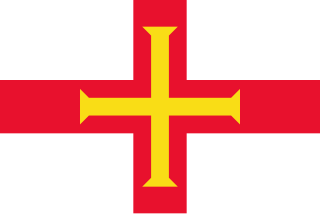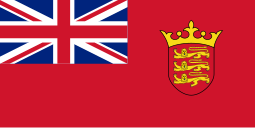
A national flag is a flag that represents and symbolizes a given nation. It is flown by the government of that nation, but usually can also be flown by its citizens. A national flag is typically designed with specific meanings for its colours and symbols, which may also be used separately from the flag as a symbol of the nation. The design of a national flag is sometimes altered after the occurrence of important historical events. The burning or destruction of a national flag is a greatly symbolic act.

The Union Jack, or Union Flag, is the de facto national flag of the United Kingdom. Though no law has been passed officially making the Union Jack the national flag of the United Kingdom, it has effectively become the national flag through precedent. The flag has official status in Canada, by parliamentary resolution, where it is known as the Royal Union Flag. As they are localities within the British state, or realm, it is the national flag of all of the British overseas territories, although local flags have also been authorised for most, which may be flown in place of, or along with the national flag. Governors of British Overseas Territories have their own flags, which are the Union flag with the distinguishing arms of the colony at the centre. The Union Flag also appears in the canton of the flags of several nations and territories that are former British possessions or dominions, as well as that of Hawaii. The claim that the term Union Jack properly refers only to naval usage has been disputed, following historical investigations by the Flag Institute in 2013.

The flag of Guernsey was adopted in 1985 and consists of the red Saint George's Cross with an additional gold Norman cross within it. The creation was prompted by confusion at international sporting events over competitors from Guernsey and England using the same flag. It was designed by the Guernsey Flag Investigation Committee led by Deputy Bailiff Sir Graham Dorey. The flag was first unveiled on the island on 15 February 1985. The gold cross represents William the Bastard, Duke of Normandy. William purportedly was given such a cross by Pope Alexander II and flew it on his standard in the Battle of Hastings. Since 2000, a red ensign with the cross in the fly has been used as the government's civil ensign and as a blue ensign.

An ensign is the national flag flown on a vessel to indicate nationality. The ensign is the largest flag, generally flown at the stern (rear) of the ship while in port. The naval ensign, used on warships, may be different from the civil ensign or the yacht ensign. Large versions of naval ensigns called battle ensigns are used when a warship goes into battle. The ensign differs from the jack, which is flown from a jackstaff at the bow of a vessel.

The national flag of Sierra Leone is a tricolour consisting of three horizontal green, white and blue bands. It was adopted in 1961, Sierra Leone's independence year, to replace the British Blue Ensign defaced with the arms of the Crown Colony of Sierra Leone.

The flag of England is derived from Saint George's Cross. The association of the red cross as an emblem of England can be traced back to the Late Middle Ages, and it was increasingly used alongside the Royal Banner in the wake of the English Reformation, especially as a maritime flag referred to as a white ensign. It was used as a component in the design of the Union Jack in 1606.

The Red Ensign or "Red Duster" is the civil ensign of the United Kingdom of Great Britain and Northern Ireland. It is one of the British ensigns, and it is used either plain or defaced with a badge or other emblem, mostly in the right half.

In heraldry, Saint George's Cross, also called the Cross of Saint George, is a red cross on a white background, which from the Late Middle Ages became associated with Saint George, the military saint, often depicted as a crusader.

In British maritime law and custom, an ensign is the identifying flag flown to designate a British ship, either military or civilian. Such flags display the United Kingdom Union Flag in the canton, with either a red, white or blue field, dependent on whether the vessel is civilian, naval, or in a special category. These are known as the red, white, and blue ensigns respectively.

The flag of Ontario is the provincial flag of Ontario, Canada. It is a defaced Red Ensign, with the Royal Union Flag in the canton and the Ontario shield of arms in the fly. The flag of Ontario was derived from the Canadian Red Ensign, which was used as a civil ensign and as a de facto flag of Canada from the late 19th century to 1965. May 21 is Ontario Flag Day.

The national flag of Anguilla, a British overseas territory, consists of a Blue Ensign with the British flag in the canton, charged with the coat of arms of Anguilla in the fly. The coat of arms consists of three dolphins in a circular formation, which were featured on the earlier Anguillan flag, and which stand for friendship, wisdom and strength. The white in the background stands for peace, and the light blue represents the sea, as well as faith, youth, and hope.

The flag of the British Overseas Territory of Bermuda as a red ensign was first adopted on 4 October 1910. It is a British Red Ensign with the Union Flag in the upper left corner, and the coat of arms of Bermuda in the lower right. Prior to this like most of the British colonies at the time it adopted a blue ensign with a seal that depicted a dry dock with three sailing ships. In 1999, the flag was changed to its current form, with an enlarged coat of arms.

The current flag of the Falkland Islands was adopted on 25 January 1999 and consists of a defaced Blue Ensign, with the Union Flag in the canton and the Falkland Islands coat-of-arms in the fly.

The flag of Jersey is composed of a red saltire on a white field. In the upper quadrant the badge of Jersey surmounted by a yellow "Plantagenet crown". The flag was adopted by the States of Jersey on 12 June 1979, proclaimed by Queen Elizabeth II on 10 December 1980 and first officially hoisted on 7 April 1981.

The flag of Trinidad and Tobago was adopted upon independence from the United Kingdom on 31 August 1962. Designed by Carlisle Chang (1921–2001), the flag of Trinidad and Tobago was chosen by the independence committee of 1962. Red, black and white symbolise fire, earth and water.

The flag of the British Virgin Islands was adopted by Royal Warrant on 15 November 1960 after the islands were made into a separate British colony. Previously, the territory was administered as part of the British Leeward Islands.

The flag of Victoria, symbolising the state of Victoria in Australia, is a British Blue Ensign defaced by the state badge of Victoria in the fly. The badge is the Southern Cross surmounted by an imperial crown, which is currently the St Edward's Crown. The stars of the Southern Cross are white and range from five to eight points with each star having one point pointing to the top of the flag. The flag dates from 1870, with minor variations, the last of which was in 1953. It is the only Australian state flag not to feature the state badge on a round disc.
A civil ensign is an ensign used by civilian vessels to denote their nationality. It can be the same or different from the state ensign and the naval ensign. It is also known as the merchant ensign or merchant flag. Some countries have special civil ensigns for yachts, and even for specific yacht clubs, known as yacht ensigns.

The flag of Ascension Island, part of the British overseas territory of Saint Helena, Ascension and Tristan da Cunha, was adopted on 11 May 2013. The flag is a blue ensign design, defaced with the coat of arms of Ascension Island.
The Red Ensign Group is a collaboration of United Kingdom shipping registries including British Overseas Territories and Crown dependencies. It takes its name from the Red Ensign flag flown by British civil merchant ships. Its stated purpose is to combine resources to maintain safety and quality across the British fleet. As of 2018 it ranked the ninth largest such group in the world, with approximately 1,300 vessels. Sir Alan Massey of the UK Maritime and Coastguard Agency commented: ".. keeping [ships] inside the REG family means that you still have some influence over their quality and performance... We can take administrative measures against members of [it] if we want to so as to ensure that safety is brought up to the necessary standards..." The vessels also receive British Consular assistance and protection.


















